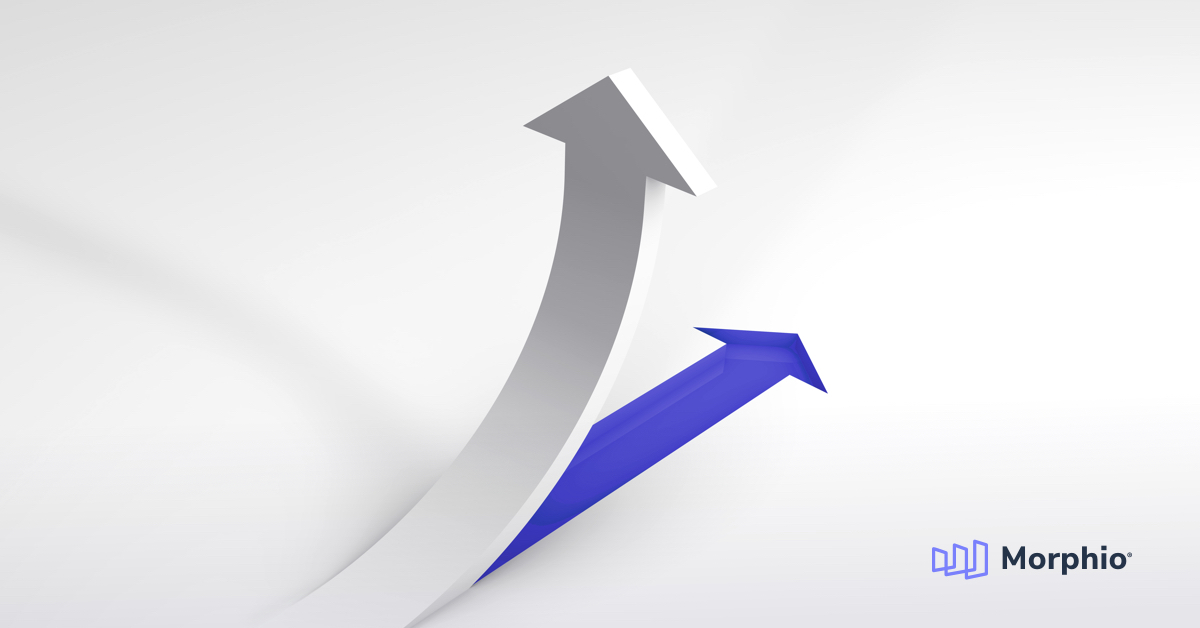
Big data is king right now.
Deep insights into a company can help cut costs, increase efficiency, secure a competitive advantage, and results in better decision making.
Nonetheless, leveraging big data isn’t a minute task.
Hence why 95% of business data goes unused. Think of all of that hidden potential!
There are countless types of business analytics an organization can use to grow, as well. Two of the most common include predictive and prescriptive analytics.
Both of these turn numbers, metrics, and charts into actionable insights and ideas.
Let me explain further.
Start Defending Against Marketing Failures Today!
Discover why over a 1000 businesses trust Hawke AI to help protect their marketing ROI.
Request a free trialWhat is predictive analytics?
Predictive analysis is a form of machine learning (AI) that provides intelligent recommendations and forecasts for the next optimal steps in business or an application.
This is used to continually pursue optimal paths to accelerate results. It also saves precious time from forecasting and creating predictions manually.
Companies can stop worrying if campaigns or strategies will work and have artificial intelligence find the answer magnitudes sooner.
I want you to think of the process like so:
It begins with predictive analytics software collecting data and cleaning it for accuracy. Patterns and trends are then identified to make predictions about future outcomes. It’s as simple as that.
If you’re considering adopting a predictive analytics tool, start small. Use it to acquire small wins that add up. Integrate it into every marketing channel, web asset, and advertising campaign you have. Leverage the predictions to boost engagement, click-throughs, sales copy, and other small elements that add up to develop the bigger picture.
What’s an example of predictive analytics?
Now that you know what predictive analytics is, let me illustrate what it looks like when applied in a real-world scenario.
I’m sure you know Dell, right? In the past, they struggled with magnifying the response rate and engagement from promotional emails.
The solution? Partnering with an AI company to develop a predictive solution that suggested and predicted the best possible sales copy.
Here’s one of the initial tests consisting of a control and variation:
Artificial intelligence was able to forecast that offering an exclusive deal with a direct value proposition would perform better. And it did. In fact, the click-through rate increased by 59% and conversions by 79%!
But that’s not all. With such great success, Dell applied the same technology to its Facebook ads. The AI-driven copy was more straightforward and had a hint of exclusivity like their emails.
These small changes increased ad click-through by 24% and conversions by 100%.
Dell was also further aware of the messaging and offered its customers were interested in for future campaigns. Learn how Morphio achieves this same effect with customer segment anomalies.
That brings me to my next point.
What is prescriptive analytics?
Prescriptive analytics builds upon predictive analytics. It takes the original findings and informs users (you) about the different available choices and the impact it will have on KPIs.
It also uses two types of analysis: heuristics and optimization. The former is for operational situations with narrowly defined traits. It is a rule-based mathematical approach that is good for reoccurring conditions with similar decisions such as invoicing, re-purchasing products, etc. It’suseful for automating, not optimizing.
However, that’s where the latter comes into play. Prescriptive optimizations create models and algorithms to determine the most optimal solution for any scenario or problem.
The overall process works like this:
It presents a predicted ETA and is ideal for those already familiar and comfortable with this type of artificial intelligence. Otherwise, it may be challenging to understand and execute.
Prescriptive analytics provides what-if scenarios, is free of personal bias and assumptions, and it accounts for all inputs, variables, and outputs.
But, here’s the thing…
There’s a lot more work needed to set up a prescriptive analytics system. It requires high-level programming languages and large ERP tools with specific software packages. Compare that to something like Morphio where you sign up and jump right into the platform, and you instantly understand why everyone doesn’t cut right to prescriptive.
It’s sufficient to start simple with predictive analytics software then move up if desired. This allows an organization to reap the benefits of the underlying technology before immediately adopting a costly and sophisticated tool.
What’s an example of prescriptive analytics?
A prime example of prescriptive analytics can be found in this HubSpot report.
The case study covers a Fortune 1000 consumer products manufacturer that services well-known consumer brands all across North America.
They had significant growth in the last ten years but discovered it was more troublesome to make good decisions because of so. After analyzing supply chain solutions, analytics software, ERP, and other products, they couldn’t find an answer.
However, they had clear goals to:
- Maximize the profitability of its product portfolio.
- Add or subtract the capacity in certain areas to maximize ROIC and profits.
- Determine what manufacturing plants should make products.
- What inventory strategy yields the highest cash flow.
They adopted a prescriptive analytics solution to achieve all of these, using five main models:
- A long-term model that optimized strategic decisions for capacity, capital usage, and product portfolio.
- A medium-term model to evaluate the best inventory strategy for deciding what plants should create products.
- An operational model to determine the best production processes and schedules for employees.
- A distribution model that discovered the most optimal strategy for distributing products.
- A model that maximized the efficiency and reduced costs of track loading and handling.
Now, what did all of this do for the manufacturing company? It resulted in an incredible increase in ROI of 1,000–2,000%. Faster and better decisions transformed the company, and management now has a more in-depth system-wide view of finances, operations, and constraints.
Final thoughts on predictive vs prescriptive analytics
Predictive analytics is a form of machine learning that creates forecasts based on real-time and historical data. This empowers organizations to make better decisions and know-how actions will affect operations ahead of time.
Prescriptive analytics, on the other hand, kicks it up a notch. It does everything predictive analytics does expect offers the next best actions, and clear steps. However, it’s much more comprehensive and expensive to implement.
That’s why you should try Morphio today for free. Our affordable predictive marketing software forecasts KPIs, campaign performance, and secures profitable insights while being fully automated.
